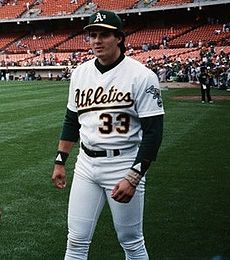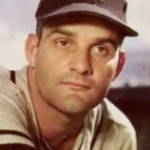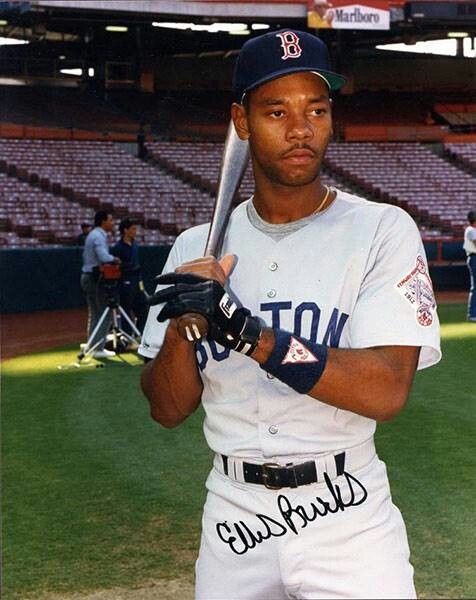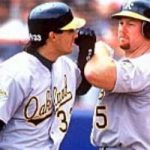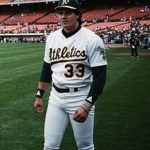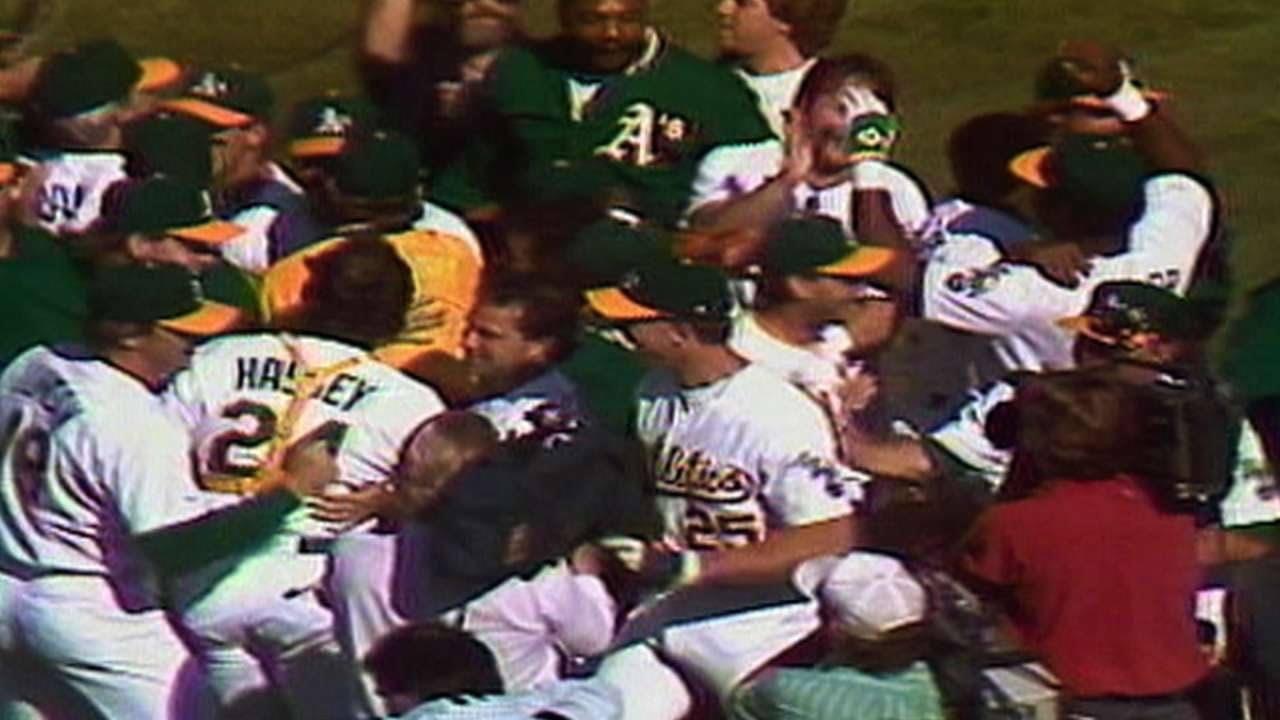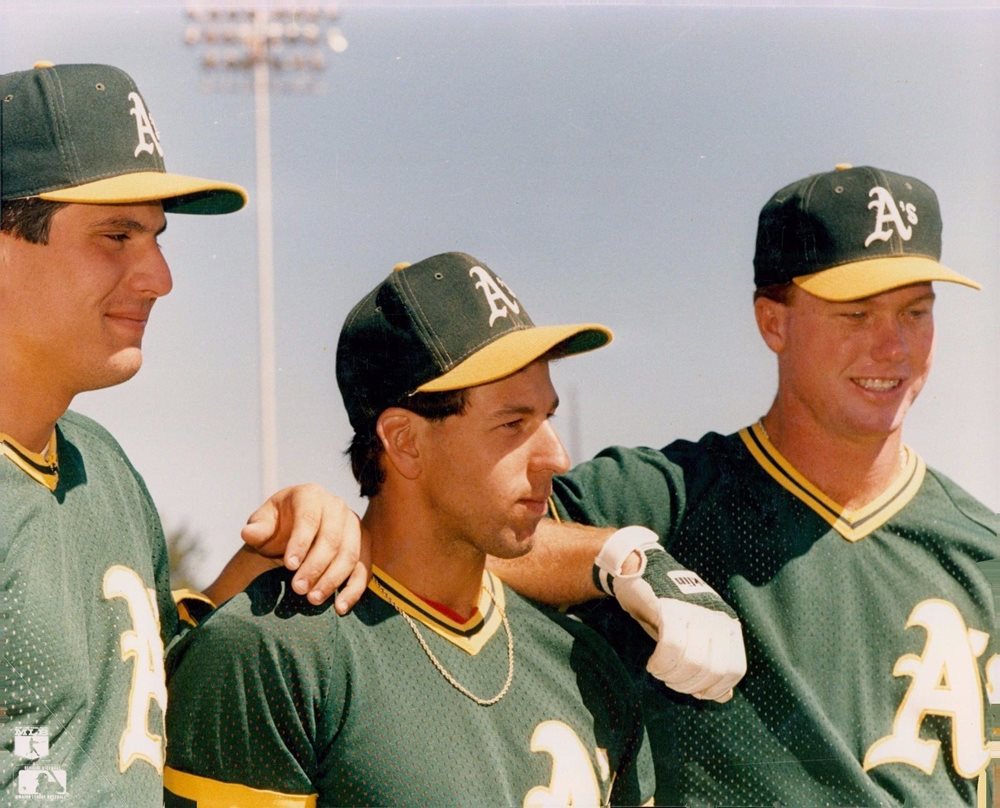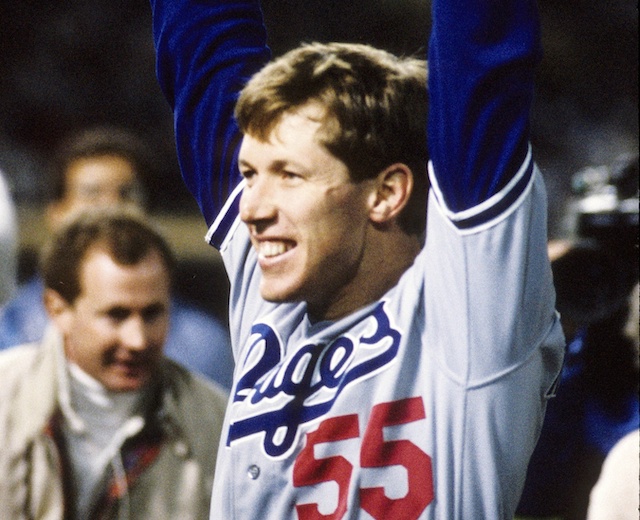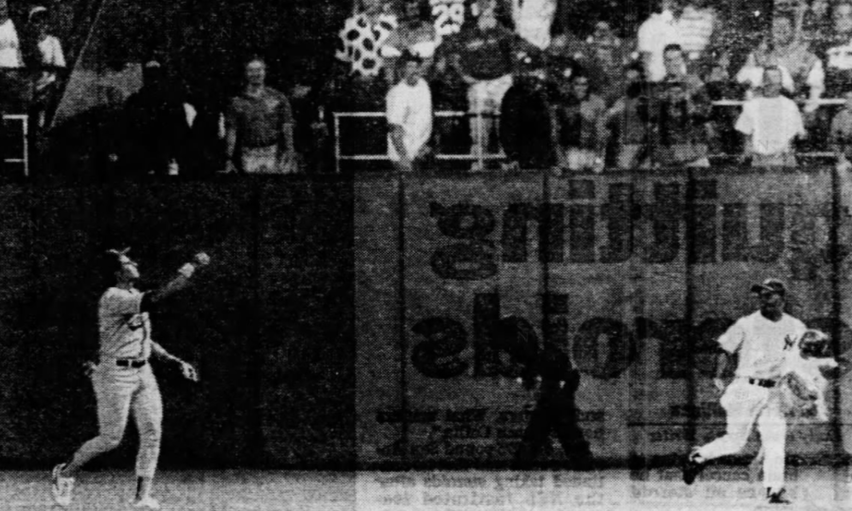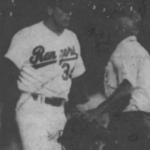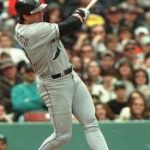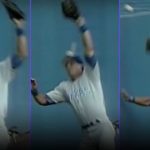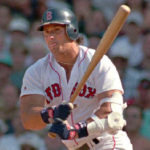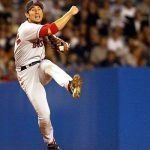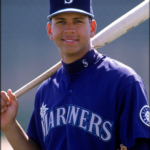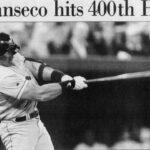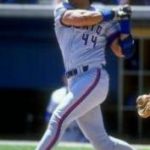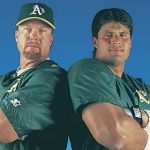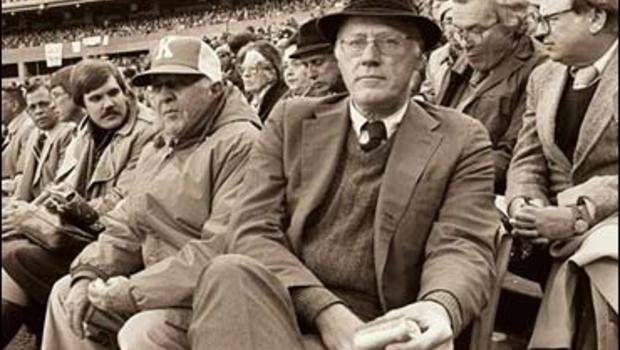Jose Canseco Stats & Facts
VINTAGE BASEBALL MEMORABILIA
José Canseco
Positions: Outfielder and Designated Hitter
Bats: Right • Throws: Right
6-4, 240lb (193cm, 108kg)
Born: July 2, 1964 in La Habana, Cuba
Draft: Drafted by the Oakland Athletics in the 15th round of the 1982 MLB June Amateur Draft from Carol City HS (Miami Gardens, FL).
High Schools: Carol City HS (Miami Gardens, FL), Coral Park HS (Miami, FL)
Debut: September 2, 1985 (12,694th in MLB history)
vs. BAL 1 AB, 0 H, 0 HR, 0 RBI, 0 SB
Last Game: October 6, 2001
vs. MIN 1 AB, 0 H, 0 HR, 0 RBI, 0 SB
Full Name: Jose Canseco
Nicknames: The Chemist
Twitter: @JoseCanseco
View Player Bio from the SABR BioProject
Relatives: Brother of Ozzie Canseco
Nine Players Who Debuted in 1985
Andres Galarraga
Paul O’Neill
Ozzie Guillen
Devon White
Jose Canseco
Cecil Fielder
Teddy Higuera
Shawon Dunston
Todd Worrell
The Jose Canseco Teammate Team
C: Ivan Rodriguez
1B: Mark McGwire
2B: Chuck Knoblauch
3B: Carney Lansford
SS: Nomar Garciaparra
LF: Rickey Henderson
CF: Bernie Williams
RF: Ruben Sierra
DH: Frank Thomas
SP: Dave Stewart
SP: Bob Welch
SP: Curt Young
SP: Roger Clemens
SP: Mark Buehrle
RP: Dennis Eckersley
RP: Rick Honeycutt
M: Tony LaRussa
Notable Events and Chronology for Jose Canseco Career
Biography
Sports columnist Peter Gammons once called Canseco one of the three greatest wastes of talent from 1980 to 2000, lumping him with 1986 Met burnouts Dwight Gooden and Darryl Strawberry. As strange as it sounds for a player who averaged around 30 homers a year, Gammons may be right. Canseco was a baseball giant in size, potential, and gossip, and became the first member of the 40-40 club when he was a mere 23 years old, winning the MVP award that year in a landslide. But arrogance and injuries, some inadvertently caused by the bulging muscles that gave him such exceptional power, ended up wreaking havoc with his career.
Canseco’s image was gobbled up by tabloids. He initially seemed like the progeny of Babe Ruth for his prodigious power and intense off-field life, but that’s where the similarities ended. Canseco was no golden boy of the press, and his questionable attitude and run-ins with the law left him vilified by many fans. But at his peak, few people — save perhaps his Bash Brother teammate Mark McGwire — could match his formidable presence and tremendous swing at the plate.
Born in Havana, Cuba, Canseco was selected by the Oakland Athletics out of his Miami high school, and showed extraordinary power in the minor leagues. He was promoted to the majors in 1985, and began his big-league career by striking out in 12 of his first 24 at-bats and 31 times in 96 at-bats. But despite a staggering club-record 175 strikeouts in 1986, his 33 home runs and 117 ribbies earned him the Rookie of the Year award in a close decision over Wally Joyner.
With great bat speed and power to all fields, Canseco became the first Athletic with back-to-back 100-RBI seasons and became the team’s second player with three straight 30-homer seasons. Two years of intense weight training improved his power, but he also improved greatly on defense and showed a strong arm, prompting manager Tony LaRussa to move him from left to right field.
Canseco took home the AL MVP Award in 1988, helping power the A’s to the World Series with his .307 average, 42 homers, and 124 RBIs. Supporting Canseco offensively was Mark McGwire, who also won the Rookie of the Year Award a year before when he slugged a rookie-record 49 home runs. Canseco and McGwire became known as the Bash Brothers, and though their career and popularity paths would ultimately take different turns, they would forever be linked in Oakland.
Canseco’s three homers in the League Championship Series matched George Brett’s American League record, and his monstrous dead-center home run in Game Four dented a TV camera over 400 feet from the plate. In Game One of the World Series, he hit his first major-league grand slam, the 16th in Series history and just the second ever by a player in his first game (Dan Gladden had done it in 1987). It would turn out to be his only hit in the Series, as the overachieving Los Angeles Dodgers stunned the favored A’s.
On the tails of his MVP season, Canseco began a downward spiral into self-adulation. He missed the first half of 1989 with a broken bone in his hand but stayed in the news with a string of speeding tickets that started before the season, including one for which he was clocked at 125 mph in a Jaguar. The outfielder was also gisven a citation for carrying a loaded handgun in a car, prompting a well-documented feud between him and the California Police Chiefs Association.
Evidence of his initial popularity with fans, Canseco was elected to start in the Midsummer Classic that season despite not playing a single game in the first half. When he came back to the game in July 1989, a publicist hatched a scheme for Jose to open his own hotline — 1-900-234-JOSE — which he did to brief success and the ire of his teammates and manager. Despite the side projects, Canseco totaled 17 second-half homers, and helped the A’s sweep the San Francisco Giants in the World Series by batting .357 with a home run.
Canseco’s bad publicity continued the following year. The outfielder’s cockiness was in full effect, no doubt catalyzed on June 27, 1990, when he signed the most lucrative contract in baseball to that date, a five-year, $23.5 million deal. His love for fast cars already well-noted from the many speeding tickets the year before, Canseco began driving a Lamborghini whose plates succinctly said “40-40.” Still the slugger continued his pace, bashing 37 homers and driving in 101 runs.
In February 1991, having just bought some new aviation fuel for his Porsche, Canseco was nailed in Miami for going 104 MPH. When the officer informed him of his speed, he sardonically replied, “oh, you’re so generous.” Three months later, Canseco was photographed leaving the New York Upper West Side house of the infamous Madonna, prompting new fodder for tabloids. Tensions mounted at Yankee Stadium when Canseco and a fan almost came to blows over a fan’s heckling of Jose and the Material Girl. By mid-May, the outfielder was carrying around a sign that warned reporters he would only talk to journalists that he knew. Yet even these distractions didn’t do in Canseco, who hit 44 home runs and drove in 122 RBIs.
In August 1992 Canseco was in the middle of a subpar (by his standards) year; with just 22 homers, he seemed apathetic on the field and in the clubhouse. During many of his at-bats, deafening boos filled the Oakland Coliseum. In the midst of a playoff run, the A’s traded Canseco to the Texas Rangers for slugger Ruben Sierra, pitcher Bobby Witt, closer Jeff Russell, and cash. Though modestly stunned, Canseco didn’t lose a whit of bravado when a reporter asked him where he’d been traded: “To Ethiopia,” the slugger replied. “For a box of Froot Loops and a camel to be named later.”
Canseco suffered his two most embarrassing on-field moments with in Texas. On May 23, 1993, he leapt into the air at the wall to snag a fly ball from Cleveland Indians’ Carlos Martinez, but as he did so, the ball ricocheted off his head over the wall for a home run. Three days later, Canseco convinced manager Kevin Kennedy to let him pitch the eighth inning of a blowout to the Red Sox. He did retire the side, despite allowing three earned runs on three walks and a pair of singles, but a month later felt the repercussions. His bulky, muscle-bound body wasn’t used to the pitching motions, and Canseco had to undergo ligament surgery in his right elbow, ending his season prematurely.
His once-mighty outfield arm severely weakened by the surgery, Canseco came back the following year as a full-time designated hitter. But though he knocked 31 round trippers and tallied 90 RBIs, the Rangers were iffy on his DH-only status, and traded him in the offseason to the Boston Red Sox for speedy leadoff hitter Otis Nixon and third baseman Luis Ortiz.
Falling victim to recurrent injuries in Boston, Canseco became as much of a risk as he was an offensive threat. He was on the disabled list for more than a month in 1995 with a sore groin, rib cage, and elbow. The following year, an awkward swing twisted his muscle-stacked torso, and he fell to the disabled list with a back injury in the summer. But even while playing in just 96 games, the big slugger hit 28 home runs, more than anybody else on the team except for Mo Vaughn.
In January 1997, Canseco was traded back to Oakland for pitcher John Wasdin and cash, but his reunion with his Bash Brother was short-lived. On July 31, 1997, McGwire was traded to the St. Louis Cardinals, and the following day Canseco hit the disabled list with yet another back injury that would keep him sidelined for the rest of the season.
The following season the slugger signed a deal with the Toronto Blue Jays and resurrected his power stroke, if not his batting average. As the DH in Toronto, Canseco played over 150 games for the first time since 1991, and hit 46 homers with 107 RBIs, though he batted just .237 and had a measly on-base percentage of .318.
By now, Canseco had drifted away from the tabloid spotlight. He had settled down in a “normal” marriage with a former Hooters waitress and fitness champ and had a young daughter. But even his new serene life combined with a monster 1998 season couldn’t get him signed to a multi-year deal, as teams winced at the possibility of the injury-prone Canseco wasting away on the bench. Finally, Jose signed with the Tampa Bay Devil Rays, a power-hungry team that finished last in the league in home runs the year before. With the D-Rays, the designated hitter totaled 34 homers even while losing a month to the disabled list with another back injury.
Halfway through 2000, after another trip to the DL and just nine longballs under his belt, Canseco was put on waivers, and surprisingly picked up by the New York Yankees, who were en route to their fourth World Series in five years. It didn’t take manager Joe Torre’s surprised reaction to make it clear that the move was made solely to keep other American League teams from picking up the slugger. Canseco was limited to a platoon DH role, one that he despised, and though he received a warm reception at his former battleground, he was on the Anaheim Angels the following spring.
Canseco’s tenure with the Halos didn’t last long, as he was dropped just halfway through spring training. Incredulous at the decision and still confident he could play with a major-league team, he went to play with his twin brother Ozzie Canseco (who had previously toiled in the Yankees and A’s systems) for the Independent League Newark Bears. In June 2001, Canseco was finally signed by a major league team, the Chicago White Sox. Calling his time in Newark “a nightmare,” the DH was back hitting homers, trying to reach the 500-mark that once seemed easily within his reach, but got further away with each stint on the disabled list.
@ET-DC@eyJkeW5hbWljIjp0cnVlLCJjb250ZW50IjoicG9zdF90YWdzIiwic2V0dGluZ3MiOnsiYmVmb3JlIjoiTGVhcm4gTW9yZSBhYm91dCB0aGUgdGVhbXMsIHBsYXllcnMsIGJhbGwgcGFya3MgYW5kIGV2ZW50cyB0aGF0IGhhcHBlbmVkIG9uIHRoaXMgZGF0ZSBpbiBoaXN0b3J5IC0gLSAtIC0gLSAtIC0gIiwiYWZ0ZXIiOiIiLCJsaW5rX3RvX3Rlcm1fcGFnZSI6Im9uIiwic2VwYXJhdG9yIjoiIHwgIiwiY2F0ZWdvcnlfdHlwZSI6InBvc3RfdGFnIn19@
At the age of 23, Cuban-born Canseco became the first player in big league history to hit 40 homers and steal 40 bases in the same season. For his historic effort, the right-handed slugger with the sculpted physique earned the American League Most Valuable Player Award. With Mark McGwire he formed the “Bash Brothers,” a powerful home-run-hitting duo that helped the Oakland A’s to three straight pennants. In his skin-tight uniform and with his often bizarre self-promoting behavior, Canseco managed to grab headlines in each of the four cities where he hit at least 30 homers in a season, as well as the four in which he didn’t. In the end, he found himself out of the game at the age of 36, with 462 homers and more than 1,400 RBI to his credit. Unable to reconcile the fact that injuries, a high salary, and a bad attitude had sealed his fate, Canseco lashed out at baseball, penning a tell-all book that named players who he claimed used steroids. In March of 2005, he testified at a Congressional hearing that he had personally injected steroids into some of the biggest stars of the game during his career. As a result of his accusations, Canseco became a persona non grata in baseball circles.
Played For
Oakland Athletics (1985-1992)
Texas Rangers (1992-1994)
Boston Red Sox (1995-1996)
Oakland Athletics (1997)
Toronto Blue Jays (1998)
Tampa Bay Devil Rays (1999-2000)
New York Yankees (2000)
Chicago White Sox (2001)
Linked: Mark McGwire, Rafael Palmeiro, Ozzie Canseco
Best Season, 1988
Canseco led the American League with a .569 slugging percentage, 42 homers, 124 RBI, and 76 extra-base hits. He became the first player to sock 40 homers and swipe 40 bases in the same season, and helped the A’s to their first pennant in 14 years.
Awards and Honors
1986 AL Rookie of the Year
1988 AL MVP
Post-Season Appearances
1988 American League Championship Series
1988 World Series
1989 American League Championship Series
1989 World Series
1990 American League Championship Series
1990 World Series
1995 American League Divisional Series
2000 World Series
Where He Played: Right field (679), left field (356), DH (837)
Feats: Canseco was the first player to hit 30 or more homers in each of his first three seasons… Became the first player to hit 40 homers and steal 40 bases in a single season, in 1988… In August of 1992, Canseco walked in seven straight plate appearances, tying a ML record.
Milestones
Hit his 400th career homer on April 14, 1999, off Kelvim Escobar of the Blue Jays.
Transactions
June 7, 1982: Drafted by the Oakland Athletics in the 15th round of the 1982 amateur draft; August 31, 1992: Traded by the Oakland Athletics to the Texas Rangers for Ruben Sierra, Jeff Russell, Bobby Witt, and cash; December 9, 1994: Traded by the Texas Rangers to the Boston Red Sox for Otis Nixon and Luis Ortiz; October 30, 1995: Granted Free Agency; December 6, 1995: Signed as a Free Agent with the Boston Red Sox; January 27, 1997: Traded by the Boston Red Sox to the Oakland Athletics for John Wasdin and cash; October 31, 1997: Granted Free Agency; February 4, 1998: Signed as a Free Agent with the Toronto Blue Jays; October 22, 1998: Granted Free Agency; December 11, 1998: Signed as a Free Agent with the Tampa Bay Devil Rays; August 7, 2000: Selected off waivers by the New York Yankees from the Tampa Bay Devil Rays; November 10, 2000: Granted Free Agency; January 16, 2001: Signed as a Free Agent with the Anaheim Angels; March 28, 2001: Released by the Anaheim Angels; June 20, 2001: Signed as a Free Agent with the Chicago White Sox; November 5, 2001: Granted Free Agency.
Quotes About Canseco
“[He is] the most conspicuous example of a a player who has made himself great with steroids.” — writer Thomas Boswell, in 1988
“Jose Canseco admitted he cheated his entire career. Everything he ever did should be wiped clean. I think his MVP should go back and should go to the runnerup.” — Curt Schilling
All-Star Selections
1986 AL
1988 AL
1989 AL
1990 AL
1992 AL
1999 AL
Replaced
With an on-base percentage under .300, left fielder Dave Collins was struggling in Oakland in 1985. Upon Canseco’s call-up in September, Collins was relegated to pimch-hitting and pinch-running. Jose hit .302 with five homers and 13 RBI in 29 games.
Replaced By
Canseco’s last full-time gig was as the ChiSox’s DH in the second half of 2001. He hit .258 with decent power (16 homers and a .477 SLG percentage), but he was a short-term, fill-the-gap solution. In 2002, the Sox had a healthy Frank Thomas back as their DH.
Best Strength as a Player
Power (real or from the syringe).
Largest Weakness as a Player
Intelligence. Canseco was routinely making mental mistakes on the field, either on the basepaths or in the outfield. He was Manny Ramirez long before Manny was making a name for himself as an airhead.
| Summary | WAR | AB | H | HR | BA | R | RBI | SB | OBP | SLG | OPS | OPS+ |
| Career | 42.4 | 7057 | 1877 | 462 | ,266 | 1186 | 1407 | 200 | .353 | .515 | .867 | 132 |

